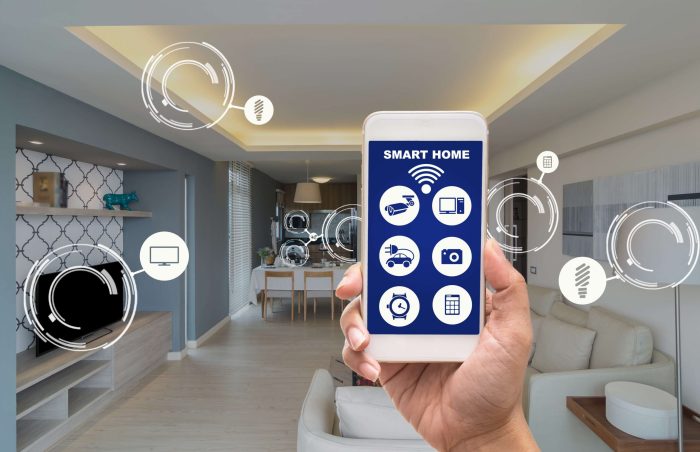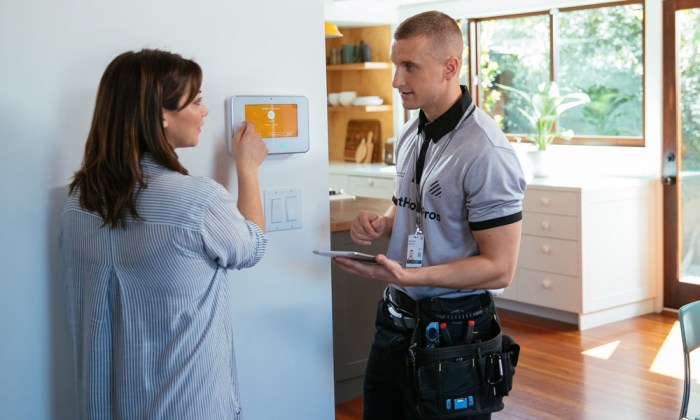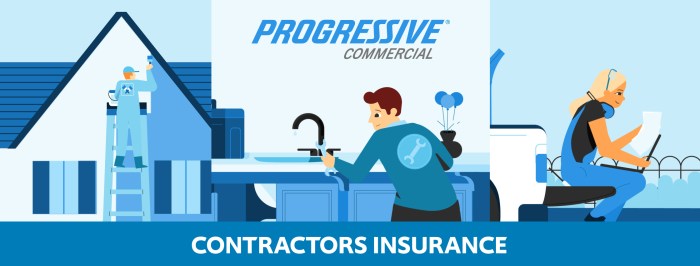Embark on the journey of smart security system installation, where technology meets safety in the comfort of your home. Discover the key components, benefits, and steps involved in setting up your very own smart security system.
Overview of Smart Security System Installation
Installing a smart security system in your home is crucial in ensuring the safety and protection of your property and loved ones. With advancements in technology, smart security systems offer a range of features that traditional security systems cannot match.
Basic Components for Smart Security System Installation
- Smart Cameras: These cameras can be placed both indoors and outdoors and provide high-definition video footage that can be accessed remotely through a mobile app.
- Motion Sensors: These sensors detect any movement in your home and can trigger an alarm or notification to alert you of potential intruders.
- Smart Locks: These locks can be controlled remotely through your smartphone, allowing you to lock or unlock your doors from anywhere.
- Security Alarms: Smart security systems come with alarms that can be triggered in case of a break-in, alerting you and potentially scaring off intruders.
Advantages of Having a Smart Security System at Home
- Remote Monitoring: With a smart security system, you can monitor your home in real-time from anywhere in the world using your smartphone.
- Customizable Alerts: You can set up personalized alerts for specific events, such as motion detection or a door being opened, ensuring you are always informed of what is happening at home.
- Integration with Smart Home Devices: Smart security systems can be integrated with other smart home devices, allowing for a seamless automation of your home security.
- Deterrence: The presence of visible security cameras and alarms acts as a deterrent to potential intruders, reducing the risk of break-ins.
Planning for Installation
When considering the installation of a smart security system, there are several factors to take into account to ensure optimal performance and effectiveness. From choosing the right system to planning the layout for sensor and camera placement, careful consideration is key to a successful installation.
Types of Smart Security Systems
- Wireless Systems: These systems are easy to install and can be easily expanded or relocated. They are ideal for renters or those looking for a DIY option.
- Wired Systems: More reliable and secure, wired systems are suitable for larger homes or those looking for a more permanent solution.
- Integrated Systems: These systems combine security features with home automation, allowing for remote access and control of various devices.
Layout Design for Sensor and Camera Placement
Before installing sensors and cameras in your home, it is important to plan a layout that maximizes coverage while minimizing blind spots. Consider the following tips for optimal placement:
- Place motion sensors in high-traffic areas such as hallways and entryways to detect movement effectively.
- Install cameras at key entry points like doors and windows, as well as in areas with valuable items or high-risk zones.
- Avoid placing sensors or cameras in direct sunlight or areas with excessive glare to prevent false alarms or image distortion.
- Ensure proper connectivity between sensors, cameras, and the central control panel for seamless operation.
Installation Process
Installing a smart security system involves setting up smart cameras, sensors, and connecting them to a central hub or control panel. It is crucial to test the system after installation to ensure everything is working correctly.
Step-by-Step Guide on Installing Smart Cameras and Sensors
- Choose the optimal locations for your smart cameras and sensors, ensuring they cover key areas of your property.
- Mount the cameras securely using the provided mounts and ensure they have a clear view of the area.
- Install the sensors on doors, windows, or other entry points, following the manufacturer's instructions.
- Connect the cameras and sensors to the central hub or control panel using the designated cables or wireless connections.
- Ensure all devices are powered on and connected to the network before proceeding.
Connecting the Smart Security System to a Central Hub or Control Panel
- Locate the central hub or control panel in a central area of your home or property for optimal coverage.
- Follow the manufacturer's instructions to connect the cameras, sensors, and other devices to the central hub.
- Ensure the central hub is connected to a power source and the internet for remote monitoring and alerts.
Importance of Testing the System After Installation
- Perform a thorough test of the smart security system to check if all devices are communicating effectively with the central hub.
- Test the cameras and sensors by triggering alarms or simulating intrusions to verify their responsiveness.
- Ensure that notifications are received on your mobile device or computer when the system detects any activity.
- Make any necessary adjustments or troubleshoot any issues before relying on the system for security purposes.
Troubleshooting and Maintenance

When it comes to smart security systems, troubleshooting and maintenance are essential to ensure optimal performance and effectiveness. Identifying common issues, troubleshooting connectivity problems, and practicing good maintenance habits can help you get the most out of your system.
Common Issues
- Device Connectivity Problems: It's not uncommon for smart security devices to experience connectivity issues, whether due to Wi-Fi signal strength, interference, or configuration errors. Ensure that your devices are within range of your network and that the Wi-Fi signal is strong.
- Power Outages: Power outages can disrupt the functioning of your smart security system. Consider investing in backup power sources, such as batteries or generators, to ensure continuous operation during outages.
- Software Updates: Failure to update the software of your smart security devices can lead to compatibility issues and security vulnerabilities. Regularly check for updates and install them promptly to keep your system running smoothly.
Troubleshooting Connectivity Problems
- Check Wi-Fi Signal: Verify that your smart security devices are connected to a stable Wi-Fi network with sufficient signal strength. Consider using a Wi-Fi extender or booster to improve coverage.
- Reboot Devices: Sometimes, simply restarting your devices can resolve connectivity issues. Turn off the devices, wait a few seconds, and then power them back on to see if the problem is resolved.
- Reset Devices: If restarting doesn't work, you may need to reset your devices to their factory settings and reconfigure them. Follow the manufacturer's instructions carefully to avoid data loss.
Maintenance Best Practices
- Regular Inspections: Periodically check your smart security devices for any physical damage, loose connections, or signs of wear and tear. Address any issues promptly to prevent further damage.
- Clean Devices: Dust and dirt can accumulate on your devices over time, affecting their performance. Clean them regularly using a soft, dry cloth to ensure optimal operation.
- Update Firmware: In addition to software updates, ensure that the firmware of your devices is up to date. Firmware updates can improve performance, add new features, and enhance security.
Last Recap

In conclusion, smart security system installation offers a modern solution to safeguard your home effectively. By understanding the essentials of planning, installation, and maintenance, you can enjoy a secure living environment enhanced by innovative technology.
FAQ Overview
What are the basic components needed for a smart security system installation?
The basic components include cameras, sensors, a central hub, and a control panel.
How do I troubleshoot connectivity issues with smart security devices?
Try resetting the devices, ensuring they are within range of the hub, and checking for any interference from other electronic devices.
Why is testing the smart security system after installation important?
Testing ensures that all components are functioning correctly and that the system is providing the intended level of security.









